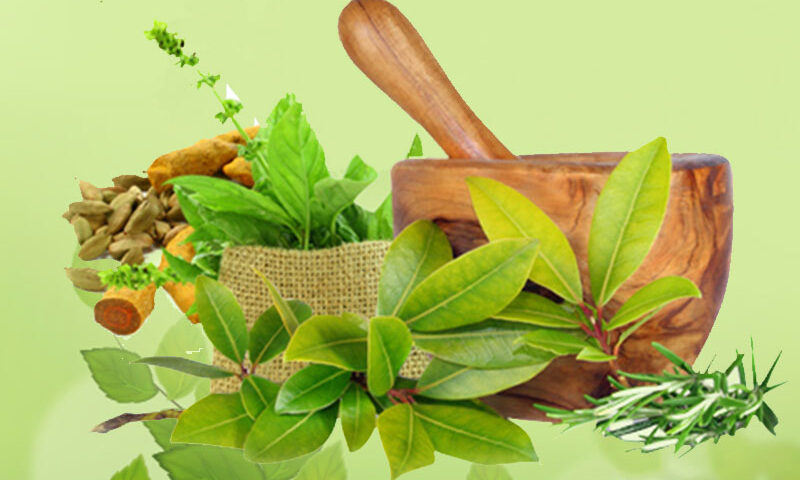The Ayurveda approach to the changing seasons: Embrace the Flow with Ayurveda
As the season changes, there are plenty of things that changes accordingly, which show a high impact on human health. Understanding the qualities of each of these seasons can help you reduce any adverse effects. Remember that your predominant dosha increases during the season it governs, it is important to follow the body’s natural inclination to respond to the seasons by adapting our diet and activities. Depending on the immunity power an individual has, seasonal care is critical to avoid any health problems. The Vata season begins in autumn and continues until early winter and The Kapha season begins in late winter and continues until early spring and the pitta season is from late spring until the end of summer.
Importance of Ayurveda for Health care
Ayurveda is an age-old procedure of curing many health problems and is proven as one of the best holistic approaches to health care. Since Ayurvedic medicine involves only natural therapies, the majority of people are responding to it positively. Ayurveda focuses mainly on annual cyclic self-care and provides the best suitable therapies and medicine accordingly. And today, with continued development in treatments, Ayurveda is challenging modern science.
Today, the consciousness towards health care is making people focus more on seasonal Ayurvedic care to maintain a healthy life with assured and straightforward treatment in a natural way. Ayurveda helps us in making simple changes in daily food intake and activities that best suit the present season.
AYURVEDIC DOSHAS AND THE SEASONS
We generally think of the seasons as spring, summer, fall, and winter, however, Ayurveda teaches us that it’s not the calendar but Nature that determines which dosha will be influenced:
- Vata season is fall/autumn and early winter
- Pitta season is summer
- Kapha season is late winter and spring
Due to the changes in the seasons, the doshas go through the cycle of accumulation, aggravation, and pacification and this can have a big impact on our body and mind due to the Ayurvedic principle of ‘like increases like and opposites balance’.
Therefore, each person needs to be aware of which season has the same qualities as their predominant dosha. For example, a person who has a high Vata constitution will have a tendency to go out of balance in the Vata season of fall and early winter. During this time, this individual needs to be focused and disciplined in their nutrition and lifestyle in order to stay in balance.
HOW THE LIFESTYLE MUST BE MODIFIED ACCORDING TO THE SEASONS IS EXPLAINED AS BELOW:
VATA SEASON
The Vata season is considered to fall during what most of us would know as Autumn and early Winter. When the weather is getting dryer, colder, windy, and harsh. The Vata season does tend to bring around changes to our health. The skin will start to feel tight and dry. Since this season is associated with wind practice of Agni Sara every day is the important Ayurvedic Vata seasonal care. Oiling the body with warm sesame oil is the best Ayurvedic practice to stay healthy and balanced in the Vata season. Apart from this, there are many vata-specifying diet and lifestyle changes that one needs to follow.
- Eat at regular intervals and don’t over-eat or forget to eat. Relax and spend time with your food.
- Practice daily relaxation methods such as yoga and mindfulness. Yoga postures that are particularly suited to Vata types are those which are more grounding and strengthening such as the corpse and lotus pose. Just remember to keep yourself wrapped up and warm!
- Keep yourself moisturized with warming, unctuous oils such as sesame, emphasize foods that are warm, soupy, heavy, and oily and increase your intake of natural oils. This can be in the form of oils used in cooking, but also oils found in nut milk for example.
- Favor foods that are sweet, sour, or salty as these will help increase heat and moisture.
- Reduce foods that are characteristically cold and dry, but also foods that are very spicy as the extreme heat can often upset the sensitive Vata digestion.
- Avoid refined foods, stimulants, and processed foods as these take more energy to break down, using precious heat reserves.
- The sudden change into long hours of darkness can also affect a vata’s already delicate sleeping patterns. Making a glass of hot, spicy milk with herbs such as cinnamon and nutmeg in the evenings can help to relax the mind before bed.
PITTA SEASON
Pitta is the season of hot summer composed of the fire element. It is said that when Pitta is balanced, one can stay energetic and joyful. So, to stay balanced with Pitta, it is always advisable in Ayurveda to Avoid foods that generate heat such as spicy, salty, and sour foods rather prefer foods with a sweet, bitter, and drying taste which are generally considered to be more cooling in their nature. In particular, the cooling qualities of cardamom, cilantro, coriander, fennel, and mint help to calm pitta’s heat.
MAKE TIME TO PRACTICE
Pitta types can become myopic and intense, so add a cooling breathing practice like sheetali pranayama to balance things out. Doing yoga poses like paschimotanasana and utthita parshvakonasana will dissipate the internal heat.
KAPHA SEASON
This season starts from the coldest part of winter into spring, and this season is dominated by earth and water elements. Kapha doshas control weight, growth, joints, and muscle strength. So, one needs to be very careful in maintaining Kapha because if it is imbalanced, then there are many health issues that one needs to suffer with.
Below are some general principles – aimed at reducing Kapha tendencies:
- Minimize cold, sweet, sour, salty or oily foods, and avoid cold drinks. Look for warm foods and drinks that are spicy, such as ginger, garlic, and onions; astringent, such as pulses and certain vegetables; and bitter, such as the dark leafy greens like kale and spinach. Try to minimize consumption of wheat and substitute with lighter grains such as quinoa, millet, and barley which are all Kapha reducing.
- Don’t sleep in too late (aim to be up before 7 am), and minimize daytime sleep which slows down metabolism, increasing Kapha.
- Exercise regularly to promote the movement of lymph, stimulate digestion, and enhance waste elimination. Exercising outdoors helps to reconnect with nature and promotes a healthy mind.
- Practice self-massage daily. In Ayurveda, a self-massage ritual known as ‘abhyanga’ can be performed every morning using warmed sesame oil, or our beautifully nourishing organic Sesame Oil. Abhyanga is a healing, soothing practice that nourishes your skin and stimulates waste elimination.
HOW TO GET AYURVEDIC TREATMENT FOR SEASON CARE?
There are many medicines and therapies also available in Ayurveda that help in seasonal care. However, it is advisable to consult an Ayurvedic practitioner to get the products and medicines that work for you. Since Ayurvedic care is a combination of body, mind, and soul, Ayurvedic Practitioners in Parramatta suggest different treatments and therapies for different people.
Pulse diagnosis and physical observation are some indirect treatments in Ayurveda that are helping people in a great way compared to any other treatments available today. In fact, there is a big list of treatments, therapies, and services available in Ayurveda, including Ayurvedic home remedies and Ayurvedic supplements. The best thing about Ayurveda is that each component is selected with care, and this is how it has gained worldwide renown.




